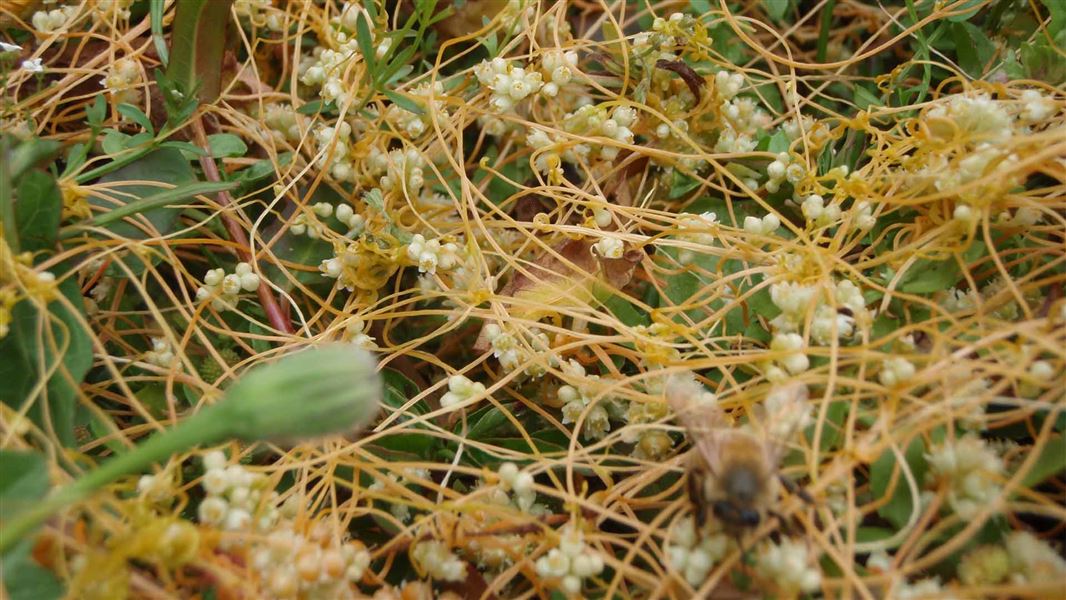What golden dodder is
This parasitic plant appears in early summer. It has yellow to orange leafless, threadlike, stems that resemble spaghetti. The stem produces tendrils that coil around other plants. When the tendrils contact a suitable host, they develop root-like structures that suck nutrients and water from the host plant.
It rapidly grows up to 5 metres in two months, smothering surrounding plants even those it does not parasitise. It has been known to grow 8 cm in 24 hours, 2 mm per hour, and 5 m in two months.
Many small white or greenish flowers grow from golden dodder in clusters. A single golden dodder plant can produce up to 16,000 seeds and form a long-lived, 10 year, seed bank. It can survive:
- 10 years in soil
- 5 years in water
- 10 to 20 years in dry conditions and possibly up to 50 years.
Why golden dodder is bad
Golden dodder is toxic to stock and can reduce the growth of animal food such as clover. Cattle feeding in pasture within 2 m of contaminated areas are at risk of consuming golden dodder. Cattle moving within 2 m of contaminated areas also risk spreading golden dodder.
It can smother wetland plants including duck food.
Unwanted Organism Status
Golden dodder (Cuscuta campestris) has been listed as an Unwanted Organism in New Zealand. This means the species can cause harm to natural and physical resources. Under the Biosecurity Act 1993, it is an offence to breed, sell or release golden dodder. It is also an offence to knowingly cause multiplication of the plant.
How you can help
Report sightings
Report sightings of golden dodder to DOC or Waikato Regional Council (WRC). Accurate location details will help the most.
- For DOC phone: 0800 DOC HOT (0800 362 468)
- For WRC phone: 0800 800 401
Stop spreading it
The risk of it spreading is high. Vehicles, equipment, clothing and cattle could transport plant fragments or seed to other duck hunting or wetland areas in the Waikato or beyond.
Check for weed fragments and seeds on:
- dogs
- livestock
- boots
- boats
- clothes
- gear.
Stock can spread this weed so keep them out of infested sites. Keep the Whangamarino wetland access gate closed so stock can't move along the causeway and banks of the stream.
What we're doing
We have an opportunity to contain this weed because it has only been found at two locations in New Zealand:
- Whangamarino wetland, and
- Lake Whangape and surrounding wetlands.
DOC is working to control it. Work includes:
- repeat annual ground and aerial control
- surveillance and monitoring of golden dodder within the infestation area
- a buffer surrounding golden dodder timed to prevent them from seeding in adjacent farmland and spreading along rivers.
The work is to safeguard surrounding farmlands from golden dodder invasion and to protect susceptible native habitat in the wetland.
